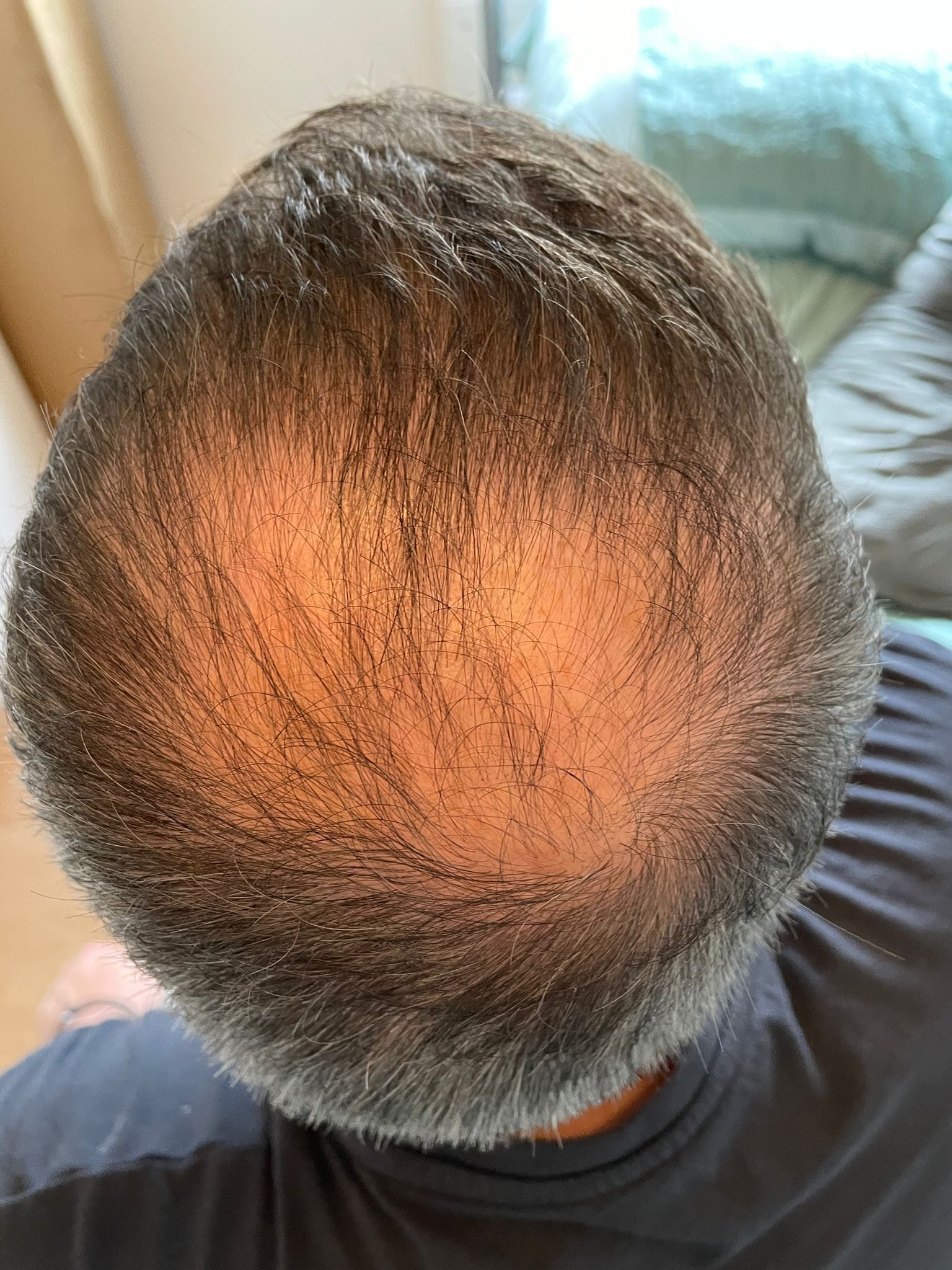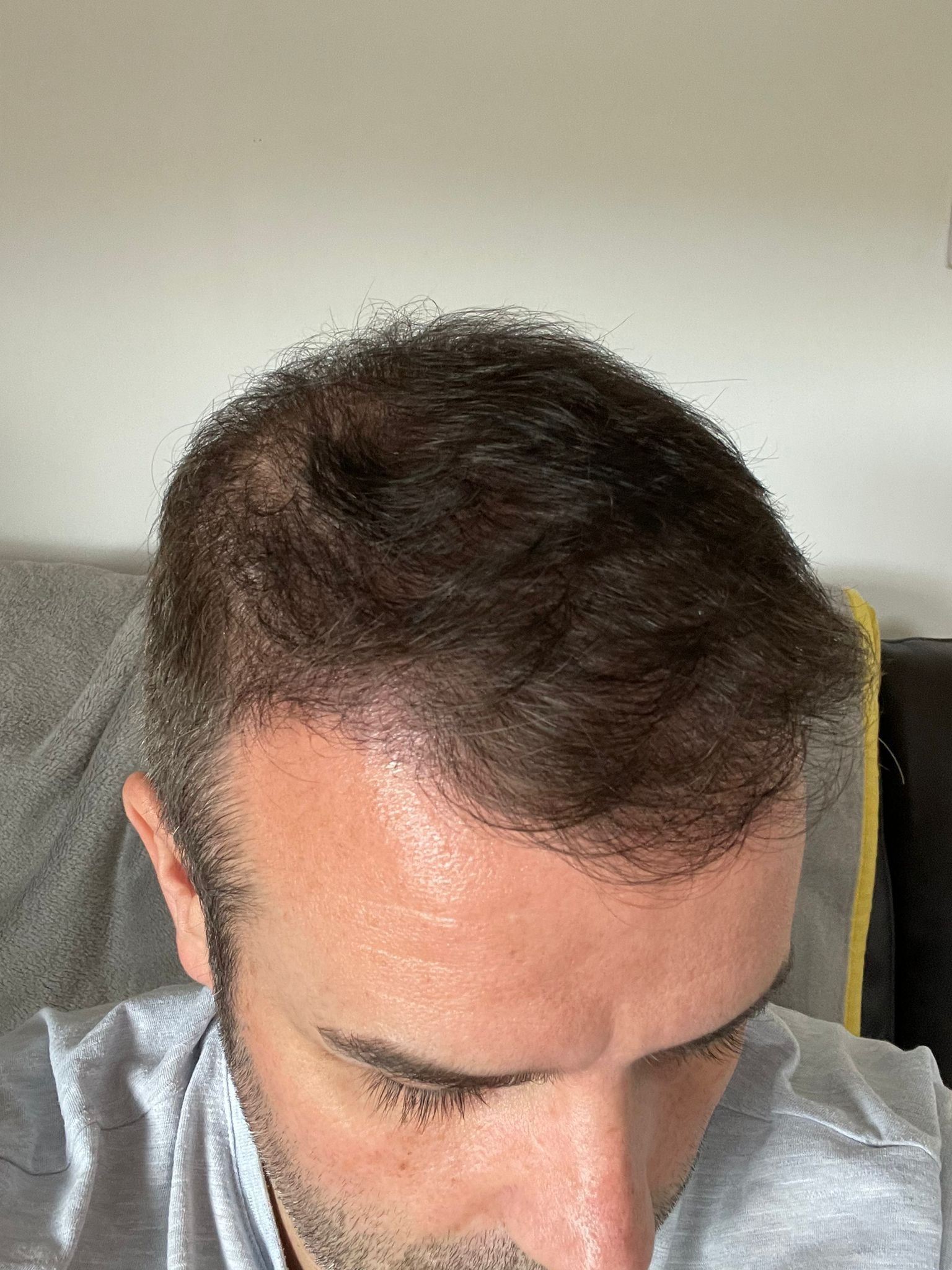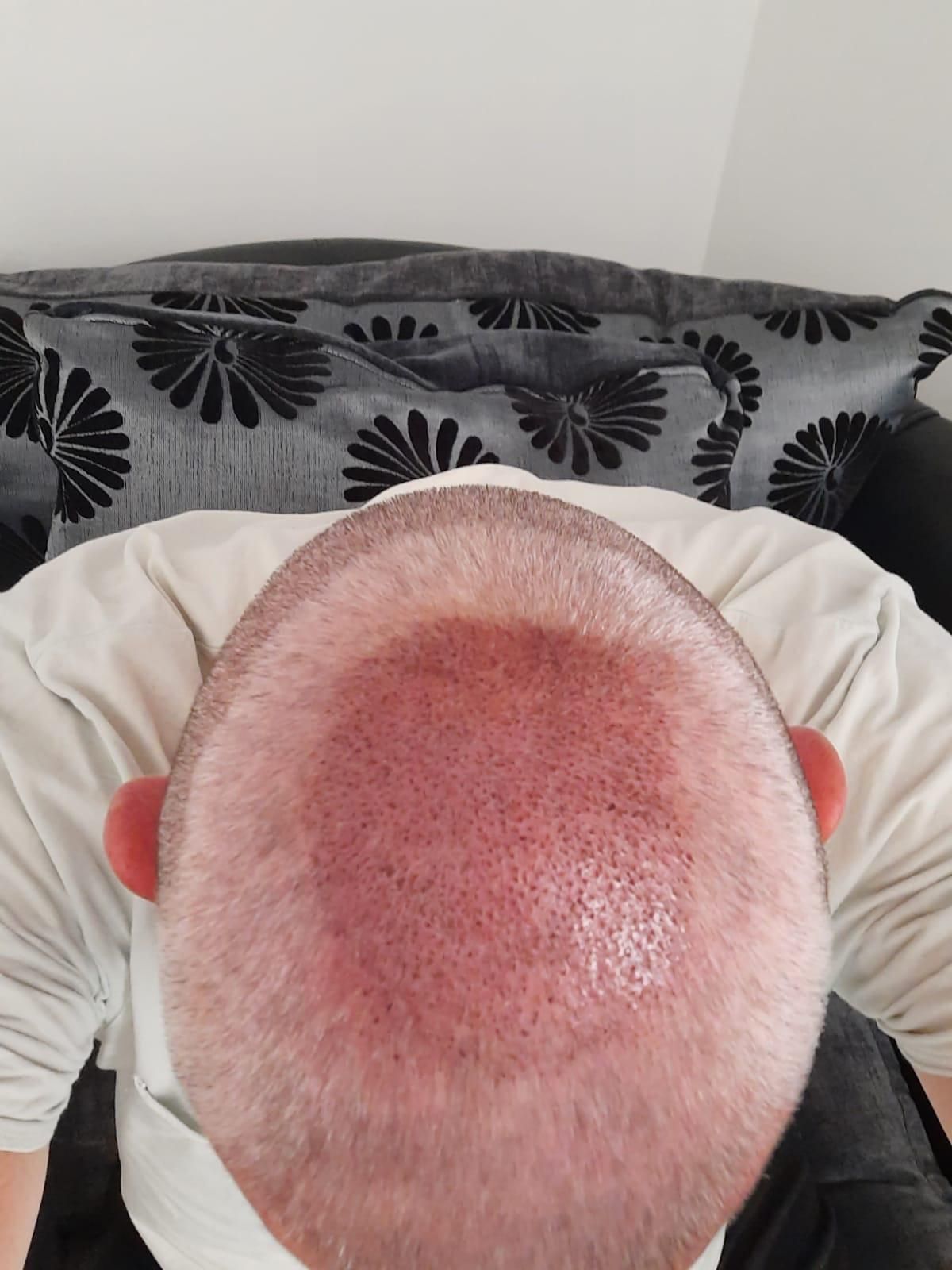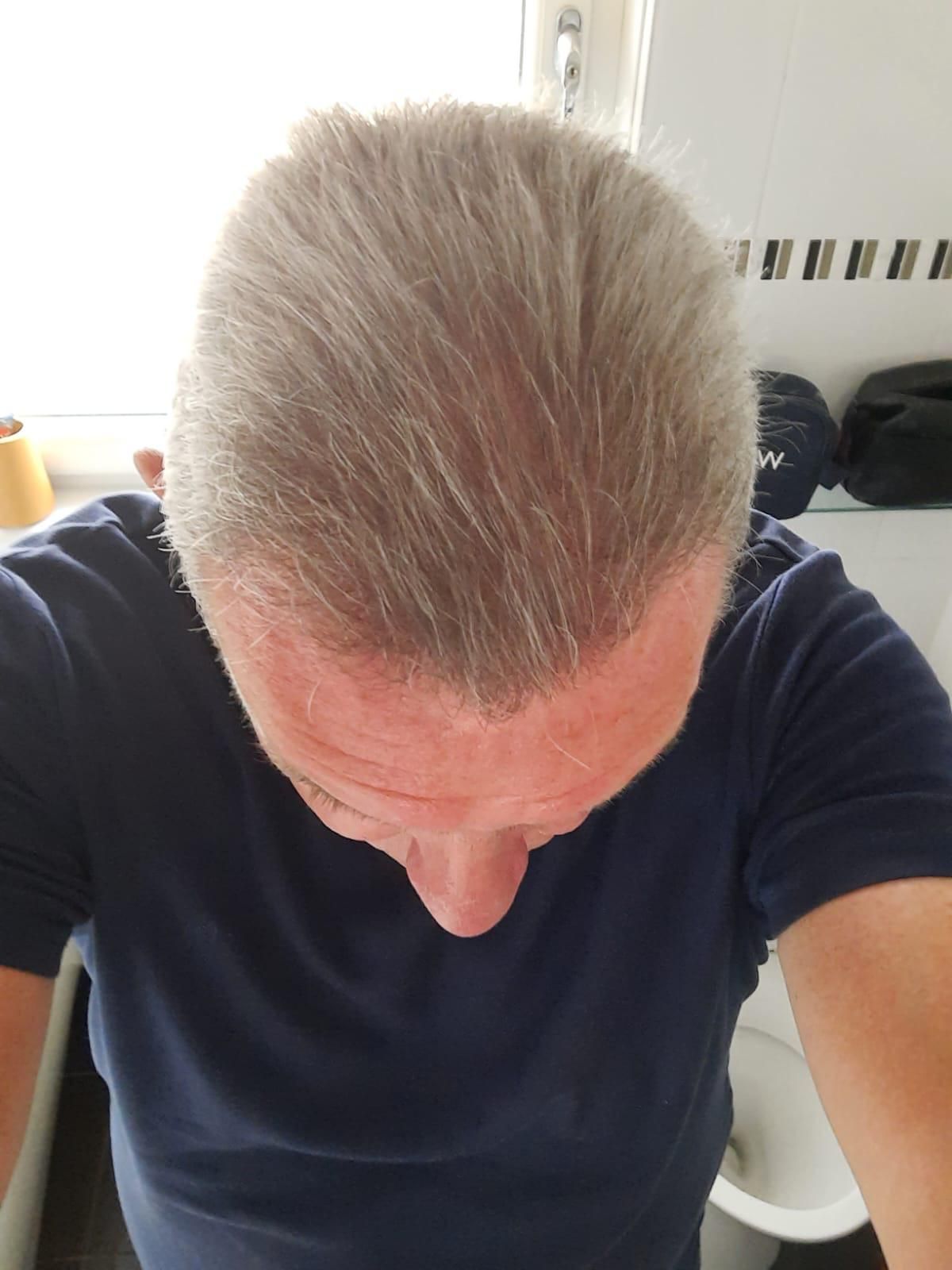Crown Hair Transplants in Manchester
Crown hair transplants are available at several reputable hair transplant clinics, including Harley Street Hair Transplant Manchester. At our clinic, we offer personalised and effective crown hair transplant services to cater to the unique needs of our patients. Our team is comprised of highly experienced and skilled GMC registered hair transplant specialists who utilise the latest technology and techniques to ensure that our patients receive the most comfortable, safe, and effective hair transplant experience possible. We specialise in Follicular Unit Extraction (FUE) technique for crown hair transplants, which involves extracting individual hair follicles from the donor area and transplanting them into the crown area to achieve a natural-looking and dense hair growth.
Our crown hair transplant services are tailored to meet the specific needs and goals of each patient, and we strive to offer competitive prices without sacrificing the quality of our services.
If you are considering a crown hair transplant in Manchester, we encourage you to schedule a consultation with our experienced hair transplant surgeon to discuss your options and receive an accurate estimate of the cost.
Contact us today to find out more!
What is a crown hair transplant?
A crown hair transplant is a surgical procedure that involves transplanting hair follicles from the back or sides of the scalp to the crown area, where hair growth is thinning or absent. The crown area, also known as the vertex, is the area located at the top and back of the head. Hair loss in this area can be caused by a variety of factors, including genetics, age, hormonal changes, and medical conditions. A crown hair transplant aims to restore a natural-looking and dense hair growth in the crown area, improving the overall appearance and boosting the patient's confidence. The most common technique used for crown hair transplants is Follicular Unit Extraction (FUE), which involves extracting individual hair follicles using a micro-punch tool and transplanting them into the crown area. The procedure is usually performed under local anaesthesia, and patients can return to their normal routine within a few days of the procedure. The results of a crown hair transplant can take several months to fully develop, but with proper aftercare and maintenance, the transplanted hair can last for a lifetime.
What causes the crown to go bald?
Balding around the crown area is a common type of hair loss that affects many people, particularly men. The main cause of this type of hair loss is genetics. The genetic factors that lead to balding around the crown area involve the sensitivity of hair follicles to dihydrotestosterone (DHT), a hormone that is derived from testosterone. DHT causes the hair follicles to shrink, which eventually leads to the hair becoming finer and shorter until it stops growing altogether. Over time, the affected hair follicles may become completely dormant, resulting in a completely bald crown area. Other factors that may contribute to hair loss around the crown area include age, hormonal changes, and certain medical conditions. Stress, poor nutrition, and certain medications may also contribute to hair loss. In some cases, hair loss around the crown area may be a side effect of chemotherapy or radiation therapy. However, genetics remain the primary cause of balding around the crown area.
Planning for a
Hair Transplant?
Planning for a hair transplant is an important step towards achieving your desired look. Before undergoing the procedure, it is important to consult with a qualified hair transplant surgeon to discuss your expectations, assess your suitability for the procedure, and create a personalised treatment plan. Our surgeons will evaluate your hair loss pattern, hair density, and donor area to determine the number of hair grafts needed and the best technique for your individual needs. Additionally, we will provide you with pre-operative instructions, such as avoiding blood-thinning medication and smoking, and post-operative care instructions to ensure a smooth recovery. It is important to follow these instructions carefully to optimise the success of the hair transplant procedure. With careful planning and the guidance of our skilled hair transplant surgeons, you can achieve natural-looking and long-lasting results from your hair transplant procedure.
Book Your
Free Consultation Today
Contact Us
Our range of
Hair Loss Treatments
Patient Care Is Our Leading Priority

FUE is a minimally invasive procedure that does not require a large incision or stitches, resulting in minimal scarring and a faster recovery time.

FUT can be an effective hair restoration option for patients with larger areas of baldness or those who require a higher number of grafts.

Non Surgical Hair Loss Treatment
Non-surgical hair restoration treatment makes use of the patient's own blood to promote hair growth.

Eyebrow hair transplants are a specialised hair restoration procedure that involves transplanting hair follicles from the scalp to the eyebrows.

Beard hair transplants are a specialized hair restoration procedure that involves transplanting hair follicles from the scalp or other areas of the body to the beard area.

Female hair transplants are a specialized hair restoration procedure that involves transplanting hair follicles to the areas of thinning or balding hair in women.
AFFORDABLE FUE HAIR TRANSPLANTS IN MANCHESTER
What hair transplant technique is used for a crown hair transplant?
The most common hair transplant technique used for a crown hair transplant is Follicular Unit Extraction (FUE). This technique involves extracting individual hair follicles from the donor area, usually at the back of the head, using a micro-punch tool. The extracted hair follicles are then transplanted into the crown area, where hair growth is thinning or absent. The FUE technique is ideal for crown hair transplants as it allows for precise extraction and placement of hair follicles, resulting in a natural-looking and dense hair growth. FUE is also a minimally invasive and scar-free procedure, and the recovery time is relatively quick, allowing patients to return to their normal routine soon after the procedure. However, other techniques such as Follicular Unit Transplantation (FUT) may also be used depending on the patient's specific needs and goals.
How much does a crown hair transplant cost?
The cost of a crown hair transplant can vary depending on several factors, including the geographic location of the clinic, the experience and expertise of the surgeon, the number of grafts required, and the type of technique used. On average, the cost of a crown hair transplant in the United Kingdom can range from £4,000 to £10,000. It's important to note that cost should not be the only factor when considering a hair transplant, as the quality of the procedure and the experience and expertise of the surgeon are also crucial considerations. Some clinics may also offer financing options to make the procedure more affordable for patients. It's recommended to schedule a consultation with a hair transplant surgeon to discuss the specific details of the procedure and obtain an accurate estimate of the cost.
Why consider a crown hair transplant?
There are several reasons why someone might choose to get a crown hair transplant:
- Hair loss: One of the most common reasons for a crown hair transplant is hair loss in the crown area. This can be due to a variety of factors, including genetics, age, hormonal changes, and medical conditions. A crown hair transplant can help restore a natural-looking and dense hair growth, improving the overall appearance and boosting the patient's confidence.
- Receding hairline: A receding hairline can also affect the crown area, resulting in a patchy or uneven hair growth. A crown hair transplant can help fill in the gaps and achieve a more uniform hairline.
- Self-esteem: Hair loss can have a significant impact on a person's self-esteem and confidence. A crown hair transplant can help improve the patient's self-image and overall quality of life.
- Aesthetic reasons: Some patients may choose to get a crown hair transplant for aesthetic reasons, such as to achieve a fuller or more youthful appearance.
It's important to note that not everyone is a suitable candidate for a crown hair transplant and a consultation with one of our hair transplant surgeons is necessary to determine whether the procedure is appropriate and what the expected results may be.
Why Choose us for your crown hair transplant?
At Harley Street Hair Transplant Manchester, we are proud to provide high-quality hair transplant services that are tailored to meet the specific needs of our clients. Our team is comprised of highly experienced and skilled hair transplant specialists who have completed hundreds of successful procedures. We utilise the latest technology and techniques to ensure that our clients receive the most comfortable, safe, and effective hair transplant experience possible. We also offer personalised consultation and treatment plans that are customized to meet the unique needs and goals of each client. Additionally, we strive to offer competitive prices without sacrificing the quality of our services.
Contact Us Today!
Don't let hair loss affect your confidence and self-esteem. Contact us today to schedule a consultation and learn more about our Crown Hair Transplant services. Our team is dedicated to helping you achieve your hair restoration goals and regain your confidence.




